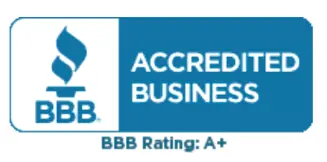-
PEGCETACOPLAN (peg set a KOE plan) treats a rare blood disease called paroxysmal nocturnal hemoglobinuria. It works by stopping the breakdown of red blood cells.
This medicine may be used for other purposes; ask your health care provider or pharmacist if you have questions.
-
This medication is injected under the skin. You will be taught how to prepare and give it. Take it as directed on the prescription label at the same time every day. Keep taking it unless your care team tells you to stop. It is important that you put your used needles and syringes in a special sharps container. Do not put them in a trash can. If you do not have a sharps container, call your pharmacist or care team to get one.
A special MedGuide will be given to you by the pharmacist with each prescription and refill. Be sure to read this information carefully each time.
This medication comes with INSTRUCTIONS FOR USE. Ask your pharmacist for directions on how to use this medication. Read the information carefully. Talk to your pharmacist or care team if you have questions.
Talk to your care team about the use of this medication in children. Special care may be needed.
Overdosage: If you think you have taken too much of this medicine contact a poison control center or emergency room at once.
NOTE: This medicine is only for you. Do not share this medicine with others.
-
Interactions are not expected.
This list may not describe all possible interactions. Give your health care provider a list of all the medicines, herbs, non-prescription drugs, or dietary supplements you use. Also tell them if you smoke, drink alcohol, or use illegal drugs. Some items may interact with your medicine.
-
Visit your care team for regular checks on your progress. Tell your care team if your symptoms do not start to get better or if they get worse.
This medication may increase your risk of getting an infection. Call your care team for advice if you get a fever, chills, sore throat, or other symptoms of a cold or flu. Do not treat yourself. Try to avoid being around people who are sick.
You may need blood work while you are taking this medication.
-
If you miss a dose, take it as soon as you can. If it is almost time for your next dose, take only that dose. Do not take double or extra doses.
-
Side effects that you should report to your care team as soon as possible:
-Allergic reactions—skin rash, itching, hives, swelling of face, lips, tongue, or throat
-Infection—fever, chills, cough, sore throat, wounds that don't heal, pain or trouble when passing urine, general feeling of discomfort or being unwell
Side effects that usually do not require medical attention (report these to your care team if they continue or are bothersome):
-Diarrhea
-Fatigue
-Pain, redness, or irritation at injection site
-Stomach pain
This list may not describe all possible side effects. Call your doctor for medical advice about side effects. You may report side effects to FDA at 1-800-FDA-1088.
-
Keep out of the reach of children and pets.
Store it in the refrigerator. Keep it in the original carton until you are ready to take it. Remove the dose from the carton about 30 minutes before it is time for you to take it. Protect from light. Get rid of any unused medication after the expiration date.
To get rid of medications that are no longer needed or have expired:
-Take the medication to a medication take-back program. Check with your pharmacy or law enforcement to find a location.
-If you cannot return the medication, ask your pharmacist or care team how to get rid of this medication safely.
NOTE: This sheet is a summary. It may not cover all possible information. If you have questions about this medicine, talk to your doctor, pharmacist, or health care provider.
DISCLAIMER: This drug information content is provided for informational purposes only and is not intended to be a substitute for professional medical advice, diagnosis, or treatment. Patients should always consult their physician with any questions regarding a medical condition and to obtain medical advice and treatment. Drug information is sourced from GSDD (Gold Standard Drug Database ) provided by Elsevier.

